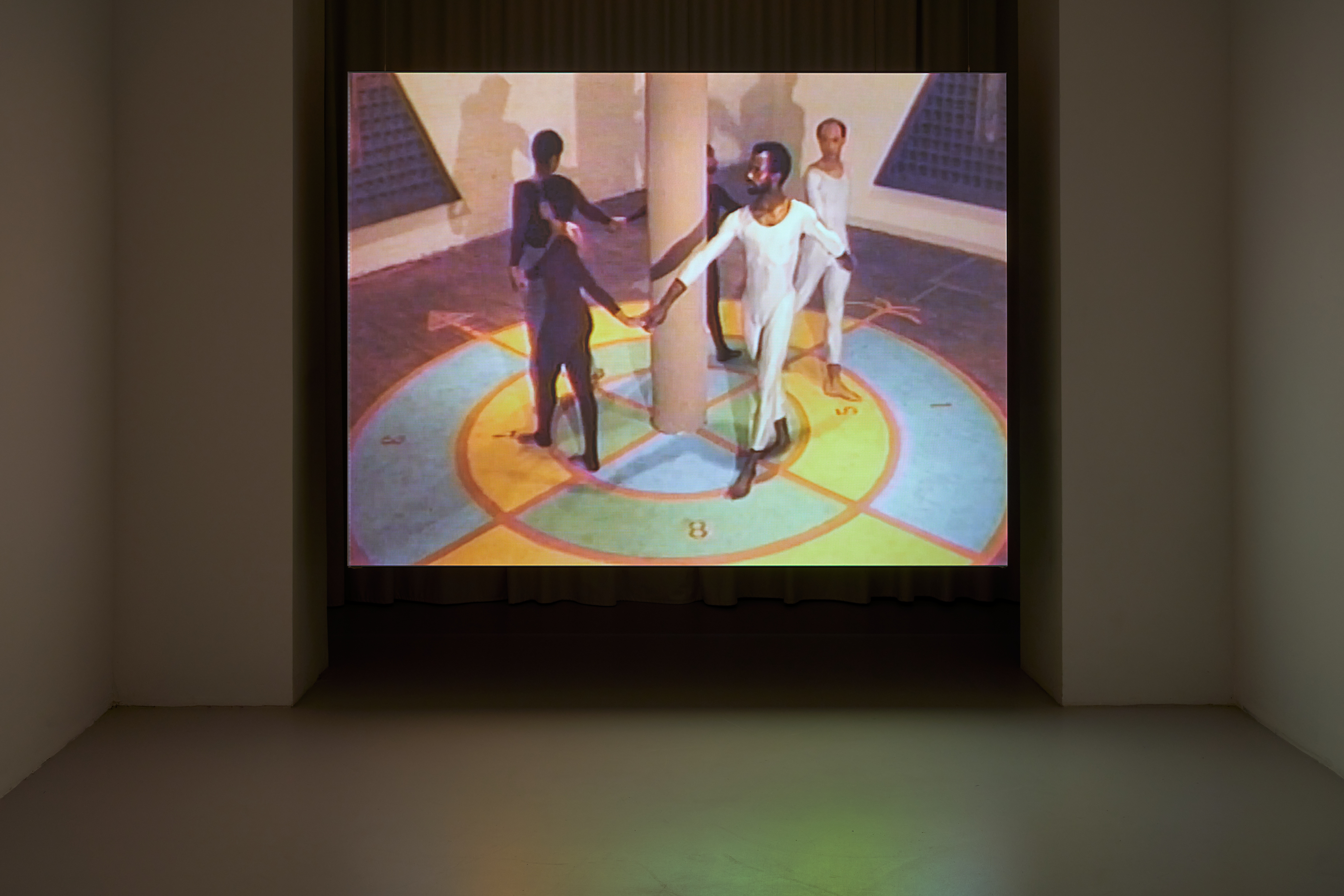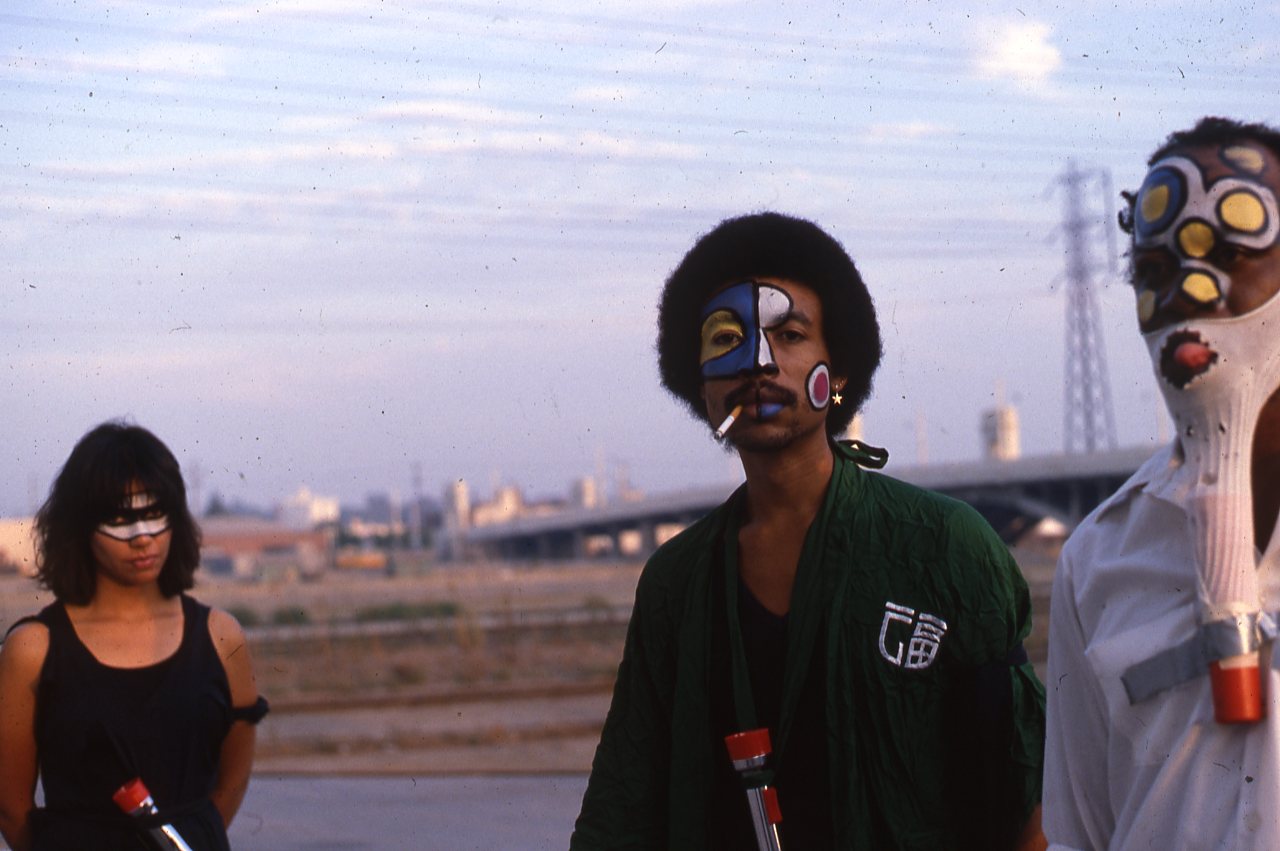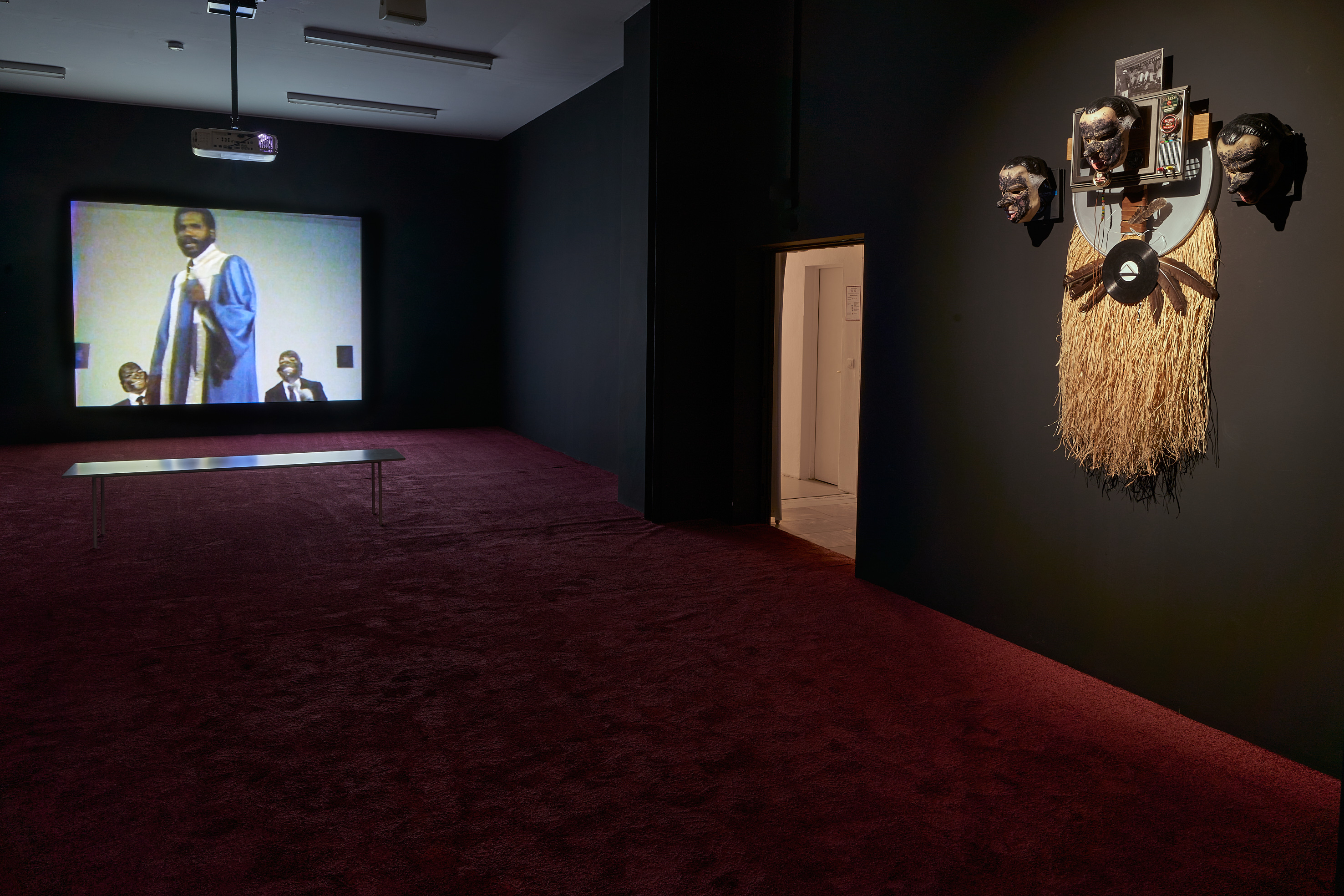
The first work you come across in Ulysses Jenkins: Without Your Interpretation, a new show at the Julia Stoschek Foundation, is a series of pictures of Jenkins pointing a gun at a dildo, the head of which is painted black.
This small selection of images doesn’t do justice to its subject, the Black American artist’s landmark 1979 performance Just Another Rendering of the Same Old Problem. In this performance, Jenkins – dressed as a janitor, and frustrated by his sexual objectification as a Black man – strips to his underwear before repeatedly firing a gun at the ‘blackface’ penis. It’s a ludicrous work that in its explicitness somehow manages to combines slapstick humour with a daring commentary on white supremacy in US popular culture.

It’s a ludicrous work that…combines slapstick humour with a daring commentary on white supremacy in US popular culture.
That performance, like so many of the films and works in this touring exhibition, has barely been shown for decades. Even Jenkins has admitted to not seeing most of these works since they were made. Had it not been for the efforts of Erin Christovale and Meg Onli – two young curators who approached him about doing a retrospective at Philadelphia’s Institute of Contemporary Art in 2021 – it is likely that his career would have gone the way of many non-white US artists of his era, and passed by unnoticed.
Born in 1946 in LA, where his parents settled after leaving the US South during the Great Migration, Jenkins studied at Southern University, where his pioneering video work on the first consumer cameras emerged in the late 1970s.
From the beginning, he focused on questions of race and gender, exploring how representation is informed by the moving image. Blending archival footage with photography and contemporary film, his often-meandering film works challenged hegemonic systems of media production whilst championing marginalised communities in multiracial US society.

In one of his best-known works, Mass of Images, Jenkins appears from behind a stack of television screens in a wheelchair while holding a sledgehammer. Repeatedly, he chants “You know nothing but what you see on TV screens”, while the film jumps between still images of racist episodes drawn from America’s media past: Laurel and Hardy in blackface, the Ku Klux Klan from D. W. Griffith’s hideously racist movie The Birth of a Nation.
He’s effectively saying, the media will continue perpetuating its racist agenda.
It’s a short, unpleasant watch, and Jenkins looks capable of doing almost anything, yet the sledgehammer remains in his lap and the TVs stay unsmashed. Nothing changes, he’s effectively saying, the media will continue perpetuating its racist agenda.
In the exhibition, he uses vocal repetition again for a technically pioneering live screen broadcast from LA to Kassel’s documenta IX in 1992, which shows Jenkins repeating the phrase “same old story”, sounding both melodious and utterly exasperated, while recounting examples of American police brutality and racism. That the broadcast ends in a fragmented psychedelia involving flying toasters reflects the whimsical experimentation of his work, which can sometimes get tiresome. Still, it’s always exuberant, and one can feel the artist’s sense of purpose as he lambasts the idiocies of mass media whilst revelling in controlling its very means of production.

Later in the show, the video work Two-Zone Transfer portrays a feverish dream that descends into a mesmerising James Brown-inspired performance by Jenkins. The artist is flanked by two college friends dressed up as presidential ‘minstrels’, a satire on the entertainment industry and the way (predominantly white) US media produce the idea of ‘Blackness’.
At the end, the artist wakes up, sits up in bed and announces to the camera that he has now found his “direction”. In its clear (if clumsy) resolution, it captures the exhilarating looseness of Jenkins’s work. That while critiquing the systems of control, never loses sight of new media’s ability to bring communities together. So that now, seeing them decades after they were made, feels both sincere and overwhelmingly positive.
- Ulysses Jenkins: Without Your Interpretation runs through 30.07.23 at the Julia Stoscheck Foundation, Leipziger Str. 60, Mitte, details.


